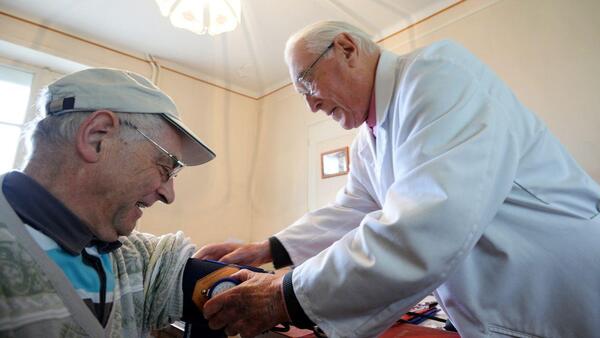
The Evolution of Drug Testing Technology and Its Impact on Public Health
Drug testing technology has undergone significant advancements over the past few decades. From rudimentary methods to sophisticated, high-precision techniques, the evolution of drug testing has played a critical role in enhancing public health. These advancements have not only improved the accuracy and reliability of drug tests but have also expanded their application across various sectors. This article delves into the evolution of drug testing technology and its profound impact on public health.
Early Drug Testing Methods
The history of drug testing dates back to ancient times when rudimentary methods were used to identify the presence of intoxicating substances. Early techniques were primarily observational, relying on the physical and behavioral symptoms exhibited by individuals. However, these methods lacked accuracy and were often subjective.
The first scientific approach to drug testing emerged in the early 20th century with the development of urine analysis. This method allowed for the detection of metabolites of various substances, providing a more objective and reliable means of identifying drug use. Despite its limitations, urine analysis laid the foundation for future advancements in drug testing technology.
Advancements in Drug Testing Technology
Immunoassay Techniques
The 1960s saw the advent of immunoassay techniques, which revolutionized drug testing by introducing a more sensitive and specific method for detecting drugs. Enzyme-linked immunosorbent assay (ELISA) and radioimmunoassay (RIA) became widely used in clinical and forensic settings. These techniques work by using antibodies to detect specific drug molecules in biological samples, providing higher accuracy and quicker results compared to earlier methods.
Gas Chromatography-Mass Spectrometry (GC-MS)
In the 1970s, gas chromatography-mass spectrometry (GC-MS) emerged as a gold standard for drug testing. This method combines the separation capabilities of gas chromatography with the detection power of mass spectrometry, allowing for the precise identification and quantification of drugs and their metabolites. GC-MS is highly accurate and can detect a wide range of substances, making it a preferred choice for confirmatory testing.
High-Performance Liquid Chromatography (HPLC)
High-performance liquid chromatography (HPLC) further enhanced the capabilities of drug testing in the 1980s. HPLC is particularly effective for detecting drugs in complex biological matrices such as blood and urine. Its high resolution and sensitivity have made it a valuable tool in both clinical and forensic toxicology.
Advancements in Point-of-Care Testing
Recent years have witnessed significant advancements in point-of-care testing (POCT) technologies. Portable devices capable of providing rapid and accurate drug test results have become increasingly popular. These devices use immunoassay-based techniques and are designed for use in various settings, including workplaces, schools, and roadside testing. The convenience and immediacy of POCT have greatly expanded the accessibility and application of drug testing.
Hair and Saliva Testing
Innovations in sample collection have also contributed to the evolution of drug testing. Hair and saliva testing have gained prominence due to their non-invasive nature and extended detection windows. Hair testing can reveal drug use over several months, while saliva testing provides a more immediate assessment of recent drug use. These methods have added versatility to drug testing, allowing for more comprehensive monitoring of substance use.
The Impact on Public Health
The evolution of drug testing technology has had a profound impact on public health, influencing various aspects of society, including:
Workplace Safety
Improved drug testing methods have enhanced workplace safety by enabling employers to implement more effective drug-free policies. Regular drug testing can identify employees who may be impaired by substance use, reducing the risk of accidents and injuries. This not only protects the health and safety of employees but also contributes to overall productivity and organizational efficiency.
Substance Abuse Treatment
Advancements in drug testing have played a crucial role in substance abuse treatment and rehabilitation. Accurate and reliable testing allows healthcare providers to monitor patients' progress, ensure compliance with treatment plans, and adjust interventions as needed. Drug testing is also used to identify relapse, enabling timely intervention and support.
Law Enforcement and Criminal Justice
Drug testing technology has become an essential tool in law enforcement and the criminal justice system. It is used for detecting drug-impaired driving, monitoring individuals on probation or parole, and investigating drug-related crimes. The accuracy and reliability of modern drug tests ensure that justice is served fairly and effectively.
Public Health Surveillance
Drug testing contributes to public health surveillance by providing data on substance use trends and patterns. This information is vital for developing targeted prevention and intervention strategies, allocating resources, and evaluating the effectiveness of public health programs. Improved drug testing methods enable more accurate and comprehensive data collection, supporting evidence-based decision-making.
Consumer Products
The advancement of drug testing has led to the proliferation of consumer products aimed at helping individuals pass drug tests, such as full body detox kits. While these products claim to cleanse the body of drugs, their efficacy and safety are often debated. The availability of such products underscores the need for continued innovation in drug testing technology to stay ahead of attempts to circumvent testing.
Conclusion
The evolution of drug testing technology has significantly enhanced its accuracy, reliability, and application across various sectors. These advancements have had a profound impact on public health by improving workplace safety, supporting substance abuse treatment, aiding law enforcement, and contributing to public health surveillance. As drug testing technology continues to evolve, it will play an increasingly vital role in promoting public health and safety.
Investing in ongoing research and development in drug testing technology is essential to address emerging challenges and ensure that drug testing remains a powerful tool for protecting public health. By staying at the forefront of technological advancements, we can continue to enhance the effectiveness and impact of drug testing in our society.